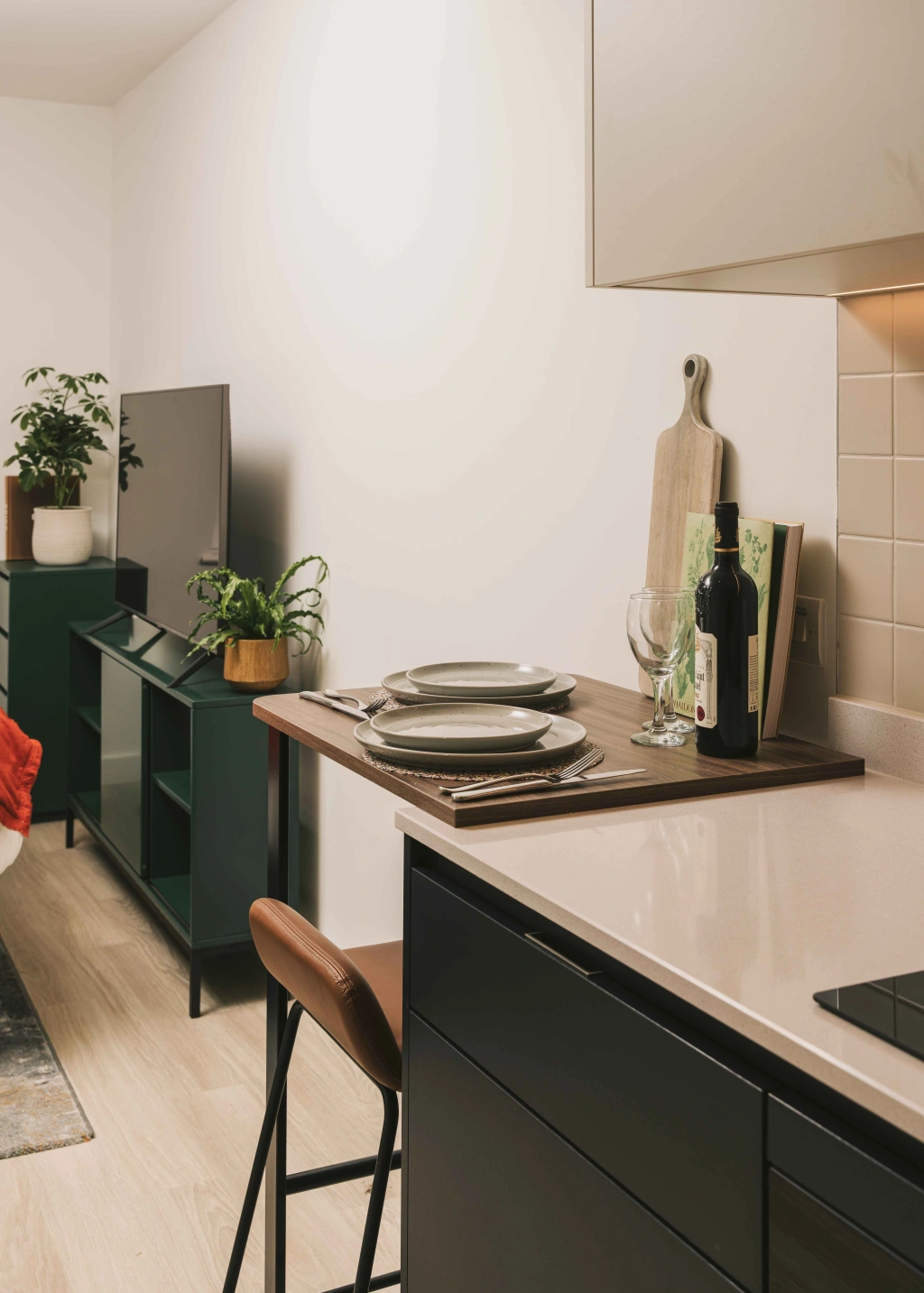Canary Wharf is home to a thriving community centred in the heart of east London. It offers a wealth of attractions to visitors and residents alike, from its diverse business industries and expansive blue and green spaces, to its exclusive Vertus residential apartments.
Join us as we navigate through the ins and outs of transport around Canary Wharf, unveiling a comprehensive guide for residents to make their way around the area.
This vibrant London area is accessible via a wide range of transport connections, including the Jubilee line, which has interchanges with all the London Underground’s other lines for your convenience. Additional transport connections include the Elizabeth line, the Docklands Light Railway, buses, river buses, pedestrian and cycling routes, hired e-Scooters, and air transportation services.
If you’re new to the Canary Wharf area or planning on becoming a resident soon, you’ll be glad to know that the city is exceptionally easy to navigate from E4. In this Canary Wharf area guide, we’ll share all our best tips for local travel and exploration.

How to get Canary Wharf by public transport?
Canary Wharf boasts a broad selection of public transport options which are safe, reliable, and efficient to use.
What tube line goes to Canary Wharf?
Canary Wharf is accessible on the Jubilee Line of the London Underground, making it easy to reach from various parts of London. Additionally, the area is served by the Docklands Light Railway (DLR), which provides frequent connections to areas like Bank, Stratford, and Greenwich. This combination of the Jubilee Line and DLR ensures excellent public transport links for commuting or visiting Canary Wharf.
Does Canary Wharf have a tube station?
Yes, Canary Wharf has its own tube station on Heron Quays Road. The most easily accessible tube lines in E14 include the DLR, the Jubilee and the Elizabeth line.
The Jubilee line station also provides quick connections to other parts of London. You may use this line to travel to London Bridge (roughly 7 minutes), Westminster (around 13 minutes), Green Park (15 minutes), Bond Street (roughly 17 minutes), and Baker Street (approximately 20 minutes) if you’d like to explore the greater London area using public transportation.
Can I hire bikes or e-Scooters?
Canary Wharf offers many Santander Boris Bikes stands, along with electronic scooters for hire. All scooters have been designed specifically for use in London and come from TfL-approved brands such as Lime, Dott and Tier. According to TfL, the typical 15-minute e-Scooter ride works out at around £3.40, making it only slightly more costly than hiring a Santander cycle at £2 for half an hour. Scooters must be unlocked with an initial fee of £1 and are charged at a rate per minute of 15p-16p.
Getting around Canary Wharf
Visitors to Canary Wharf will find plenty of cycle and pedestrian routes that allow them to explore the area in depth. The neighbourhood is only a few minutes’ walk from the popular Thames Path public trail, which runs along the entire length of the river. Greenwich is around a 45-minute walk, or 2.2 miles, away from Canary Wharf, and the Upper Bank Street Bridge provides access to the Poplar DLR station. Walkers can also take the footbridge from West Wintergarden to South Quay to see more of the area’s green and blue spaces.
There are numerous cycling Canary Wharf routes on offer too, with the London Cycle Network following a signposted route along the Thames to Canary Riverside. Cyclists can also reach Liverpool Street Station easily by bike and can expect a ride of around 19 minutes in duration. Canary Wharf offers ample cycle parking space with over 1,300 parking spaces located across the estate, and there are over 405 secure public cycle parking spaces available for a fee.
Moreover, the area has 273 Santander Cycle dock stations providing access to the UK’s cycling scheme. Find your nearest docking station on TfL website, learn more about the programme, and register for free cycling training online.
The Canary Wharf Estate has been designed to be highly accessible to the public, including to individuals with disabilities. There are currently 47 Accessible parking bays for Blue Badge Holders, accessible toilets located at Cabot Place, Canada Place, Churchill Place, Jubilee Place and Crossrail Place, and a free wheelchair loaning service available throughout Canary Wharf.
Tips for navigating Canary Wharf
Use these tips and tricks to easily navigate Canary Wharf transport and make the most out of your travels:
• Avoid travelling during peak times where possible, as tube stations, buses, and other forms of public transportation – including the roads – may be busier than usual.
• Plan ahead for your travels to ensure you have the correct transportation fare. Remember to dress for the season and to bring additional items you need – including drinking water, protective gear, and extra clothing – for when you travel by foot or cycle.
• Approach the Estate’s security staff when needed. Canary Wharf is protected by private security professionals who are on hand if you need assistance at any time
• Download the Canary Wharf app. Familiarise yourself with the map on the app covering our E14 area. This is a useful tool for both visitors and residents on the Estate!
Navigate Canary Wharf with Vertus
New to Canary Wharf and just moved into your Vertus apartment? Our concierge team are on hand to answer any questions you may have about navigating the Estate you call home.
Explore the neighbourhood using the Canary Wharf app or connect with your neighbour on the VERTUS+ app to find a walking group to familiarise yourself with what’s on.



